Since wheat is one of our essential nutrients, we need to be familiar with its characteristics, identifications, and possible substitutes.
Therefore, we picked six types of grass that have a similar appearance to wheat.
Grass That Looks Like Wheat
They are – Perennial Ryegrass, Feather Reed Grass, Quack Grass, Dallisgrass, Barnyard Grass, and Crabgrass. They are all cool-season perennial grasses originating from Europe and North Asia.
Interestingly, they appear so much like the actual wheat herb that you’ll be bewildered by the similarity.
You need to know which plants resembling wheat are hazardous.
There are several species of wheat. Each is different in terms of the grain’s shape, size, and inflorescence (a group or cluster of flowers on a stem consisting of the main branch or an intricate arrangement of branches).
1. The Ryegrass
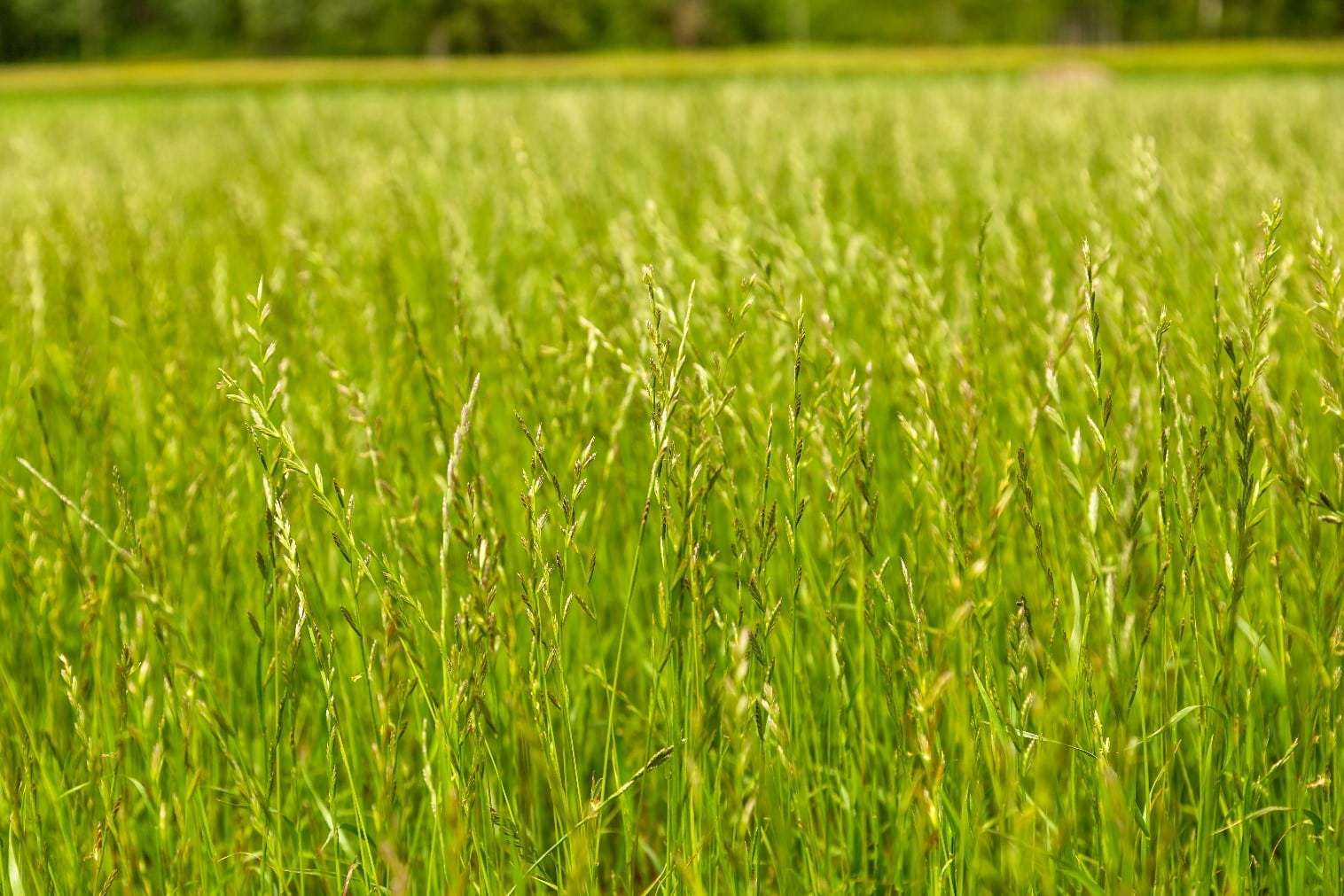
Ryegrass must also be allowed one year to mature; however, it must be grown during winter.
Because the seed heads resemble wheat closely, people often mistake it for grain. It is composed of spikelets that are evenly spaced and grow alternately from the stem.
Their length may reach up to around 3 feet, and their leaves are curled inside the bud at the end of the stem. The undersides have a shiny appearance.
The seed heads have long spikes ranging from four to sixteen inches.
If you were to measure the length of the leaf blades of Ryegrass, you would find that it ranges from eight inches to twenty-two and a half inches.
The stems are located under the leaf sheath, and the base of each branch has a ruddy appearance.
Another form of Ryegrass is perennial and shares characteristics with annual Ryegrass. The bottom of the stems of perennial ryegrass plants does not have a reddish tinge.
If you only follow these four easy stages, you can stop Ryegrass from rapidly expanding.
The first step is to apply any non-selective herbicide to the plant while it grows.
The second suggestion is to reduce the height of the mower.
Fertilisation and irrigation are the last two methods that may limit its development.
You will need to fertilise and water the turf grass to achieve the desired increase in density. This will allow a little room for the Ryegrass to continue growing to its full potential.
2. The Feather Reed Grass
The Feather Reed grass is a wheat-like grass that clumps together and has upright tips.
It may thrive in wet environments such as ponds, marshes, and locations that are prone to experiencing moderate floods and can reach a height of three feet.
It is interesting to note that feather reed grass may also thrive in arid environments, albeit specimens growing in these conditions tend to be of a lower height than those in wetter, more flood-prone regions.
The grass can also flourish in conditions ranging from complete to partial sunshine and withstand long periods of drought.
3. The Quack Grass
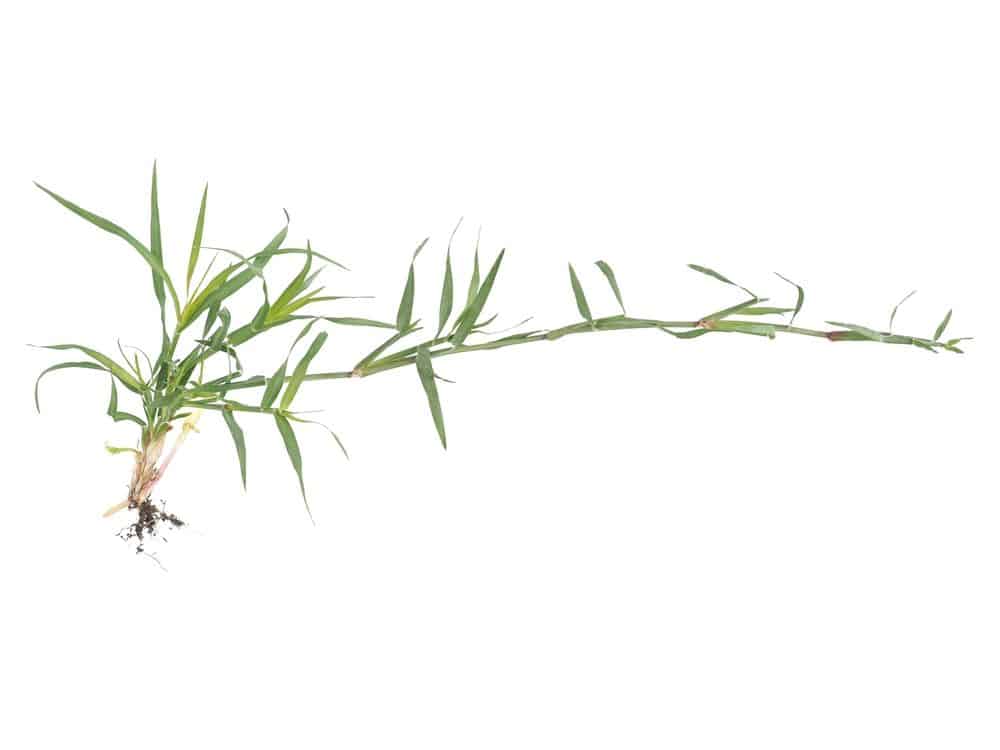
Plants belonging to the genus Quackgrass are grassy weeds with broadleaf perennial leaves. It is an illustration of the Poaceae family.
Wheat and Quackgrass share a similar appearance due to the larger blades of this grass, which grows throughout the chilly season like wheat does.
This is a common weed that grows on lawns. In most cases, they may be seen growing in fields of alfalfa.
They have a hue somewhat darker than most other turfgrasses that may be discovered.
It appears to have enough superficial characteristics with wheat for one to be easily led astray into believing that the two are interchangeable.
Nevertheless, it possesses a characteristic in its rhizome system.
The root system is rather extensive, and this contributes to the plant’s quick growth when it is grown in fields. This is because maintaining control over their rhizomes is quite challenging.
There are times when gardeners are presented with an overwhelming number of challenges, and as a result, they lose control of their plants’ growth.
If this is the case, there is only one thing that can be done: just set fire to the entire region and begin growing them again.
4. The Dallisgrass
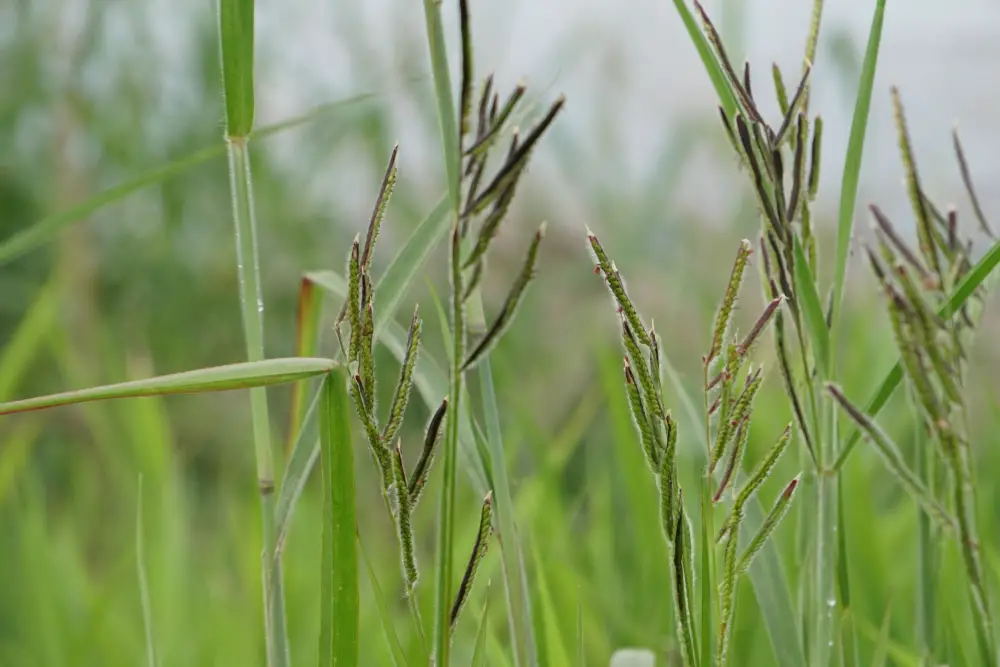
This noxious weed grass grows on our lawns throughout the warmer months and is a typical sight in the southern part of Texas.
The rhizomes of the Dallisgrass plant, which can flourish in wet and dry soil, are responsible for driving many homeowners mad.
When Dallisgrass is allowed to grow uncut, it develops a unique tall seed head that resembles wheat and stands out from the top of the plant like a sore thumb when it is not mowed.
This type of grass may reach a height of one and a half inches and develops clumps that develop into a characteristic circular pattern over time.
5. The Barnyard Grass
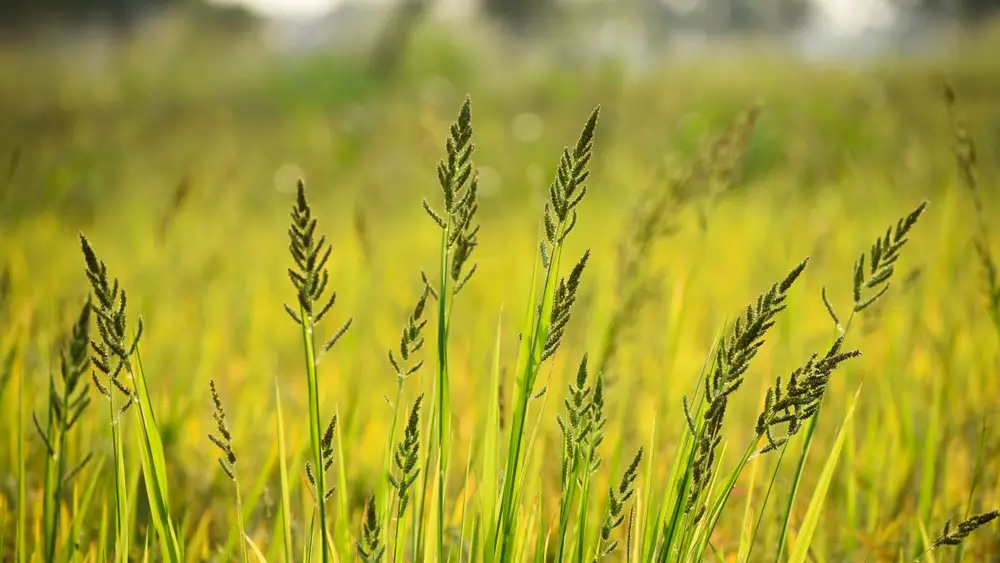
Barnyard grass is the name of the annual lawn plant on the list that looks like wheat.
Echinochloa, more often known as barnyard grass, is a kind of grass known to sprout throughout the summer months.
It has coarse stems that are relatively thick and resemble refined wheat. They can reach heights of up to 5 feet in length.
These plants have seed heads that can openly grow to a maximum of 16 inches in length on average and can reach that length. When they reach maturity, they will no longer produce the spikelet.
Their leaf blades always remain curled up within the stalk. It has a high spread rate and can potentially suffocate the crop seedlings.
The excessive amount of barnyard grass can be a detriment to crops’ growth since it blocks nutrients, sunshine, and water from reaching the crops. This results in the yields being unable to grow correctly.
Applying a pre-emergent herbicide to the weeds in the yard can help you cope with their inclination to spread quickly.
6. The Crabgrass
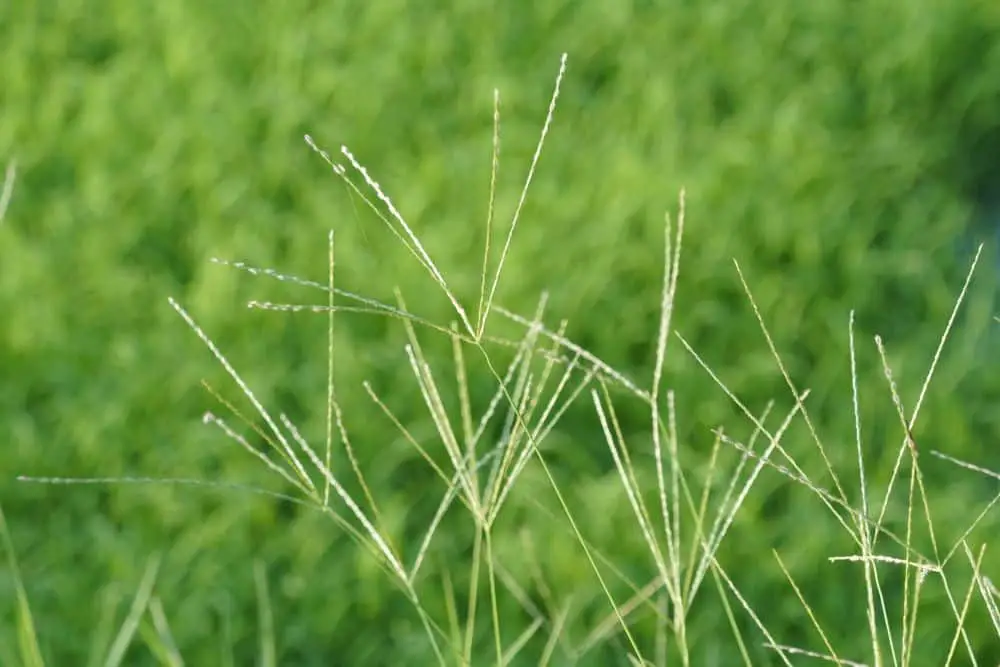
In the United States, crabgrass is a type of grassy plant that is highly widespread, and getting rid of it can be challenging for many people.
It has a very distinctive appearance and develops in bunches as it does so.
Crabgrass gets its name from how its stems spread outwards, giving it a crab-like appearance.
It grows most robustly in regions that receive lots of sunshine but has a hard time surviving in shady spots.
Additionally, it grows effectively in regions with less competition for water, space, and nutrients than in other locations.
Growing in the spaces between sidewalks and other spots where the earth is warmer is uncommon.
It is a bright green hue that tends to get darker with age.
You might even see a purple hue at the bottom of the stem if you look closely.
As a result of the increased competition for space and nutrients in your lawn, it may harm the appearance of your property and even cause your turf grass to die off.
Crabgrass can often be confused with other grass forms; thus, it is essential to accurately identify crabgrass to ensure that you are administering the appropriate treatment.
Cutting the grass is only sometimes the most effective technique to get rid of crabgrass. This might result in seeds being released back into your grass, making the situation much more severe.
These Imposters May Be Harmful To Livestock Or Pets
However, one essential fact you need to be aware of is that some of these might be harmful to livestock or pets.
Wheat plants are grasses that flourish yearly. They range from 0.4 to 1.2 meters in length, growing close to one another and producing anywhere from five to forty tillers on a single plant.
There is a wide variety of plant species on our globe. However, even though certain plant species are like one another, they have essential differences.
As a result, one needs to acquire knowledge regarding them and only use considered safe herbs. To ensure our safety, we must identify plants that are not naturally compatible with our needs.
Final Thoughts on Grass That Looks Like Wheat
So now you know – certain plants exhibit a likeness to other plants or weeds. The truth is that, despite their similarities, they belong to separate species.
We at GGT quickly identified six different types of grass that look like wheat.
We’re supposed to know these things – it must be so much harder for you, and so this article is to help you spot the enemy!
Some plants, particularly those members of the Poaceae family, have a similar appearance to wheat.
Please try to become familiar with them and keep an eye out for weeds that appear as treacherous wheat.
Safe Gardening!
Read More:

